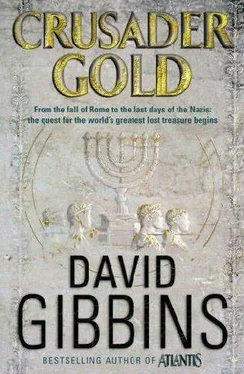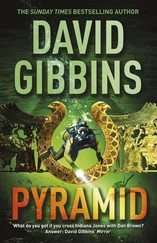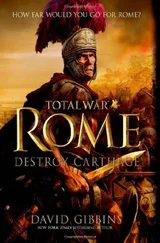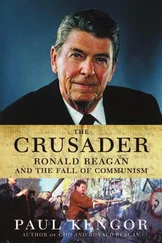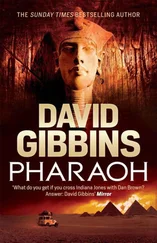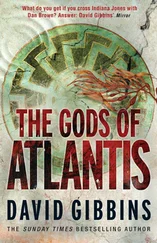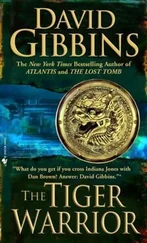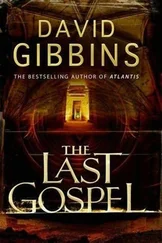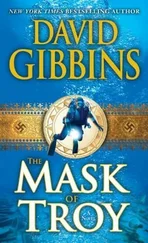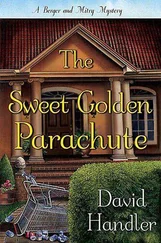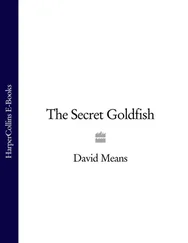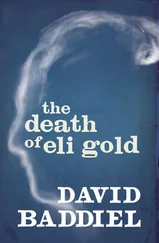David Gibbins - The Crusader's gold
Здесь есть возможность читать онлайн «David Gibbins - The Crusader's gold» весь текст электронной книги совершенно бесплатно (целиком полную версию без сокращений). В некоторых случаях можно слушать аудио, скачать через торрент в формате fb2 и присутствует краткое содержание. Жанр: Прочие приключения, на английском языке. Описание произведения, (предисловие) а так же отзывы посетителей доступны на портале библиотеки ЛибКат.
- Название:The Crusader's gold
- Автор:
- Жанр:
- Год:неизвестен
- ISBN:нет данных
- Рейтинг книги:3 / 5. Голосов: 1
-
Избранное:Добавить в избранное
- Отзывы:
-
Ваша оценка:
- 60
- 1
- 2
- 3
- 4
- 5
The Crusader's gold: краткое содержание, описание и аннотация
Предлагаем к чтению аннотацию, описание, краткое содержание или предисловие (зависит от того, что написал сам автор книги «The Crusader's gold»). Если вы не нашли необходимую информацию о книге — напишите в комментариях, мы постараемся отыскать её.
The Crusader's gold — читать онлайн бесплатно полную книгу (весь текст) целиком
Ниже представлен текст книги, разбитый по страницам. Система сохранения места последней прочитанной страницы, позволяет с удобством читать онлайн бесплатно книгу «The Crusader's gold», без необходимости каждый раз заново искать на чём Вы остановились. Поставьте закладку, и сможете в любой момент перейти на страницу, на которой закончили чтение.
Интервал:
Закладка:
“Ah, the chain,” Hiebermeyer murmured. “Remind me.”
Jack shifted over to a yellow Admiralty Chart of the Istanbul approaches pinned to the wall beside Costas. Their position was clearly marked at the outer edge of the estuary that cut through the city, its sinuous scimitar shape defining the promontory of Byzantium and forming one of the greatest natural harbours in the world. To the ancient Greeks this was Chrysoceras, the Golden Horn, as if a giant mythical bull had embedded itself in the Bosporus as it strained towards the Black Sea, a significance not lost on the three men with the bull imagery of Atlantis still fresh in their minds.
Jack picked up a pencil and traced a faint line over the entrance to the estuary. “During the Byzantine period the Golden Horn was closed off in times of emergency by a giant boom almost a kilometre long, huge links of roughly forged iron held up on pylons and barges. It was attached here, on a tower near the extremity of the city walls where the estuary meets the Bosporus, and here, about three hundred metres away from us on the Galata shore. The chain is first recorded in the eighth century AD and had a famous role in the Great Siege of 1453, but we know of only two occasions when it may have been breached. The first was in the eleventh century, when a gang of Viking mercenaries supposedly got their longships over it. The second is more definite, in 1204, when Venetian galleys broke it with a ram. The chain was rebuilt, but a severed section may have been lost on the seabed. If we can find it, then we’ve hit the layer with the loot and we’re in business.”
“The first link in our story.” Costas’ pun scarcely concealed his anxiety, his fingers quietly drumming the desk and his eyes flitting over the screen. The image had gone dark and the only indication that the ferret was operational was the depth gauge in the corner, cycling with agonising slowness through one-inch increments.
“So how can you be so certain about the location?” Hiebermeyer had put his own quest on hold and was becoming absorbed in the project.
“It’s always been contentious, but a fifteenth-century manuscript unearthed in the Topkapi archive last year gives an exact position fix between known monuments on the shoreline.”
“I don’t like it.” Costas glanced at the wall clock and shifted uneasily in his seat. “If that gun was from 1453, then we’ve got at least five metres of compacted sediment to dig through before we’re anywhere near the target layer. And we’ve only got twenty minutes before Sea Venture has to shift position.”
Jack pursed his lips in shared concern. This project was like no other they had worked on, a constant game of cat and mouse in one of the most overcrowded waterways on the planet. They had a six-hour window each day authorised by the port authorities, but even so they had to shift repeatedly to let a ferry or cargo vessel past, some with draughts so deep their screws churned up the bottom sediment. Jack had every confidence in Tom York’s ability to troubleshoot the navigation, and Sea Venture’s dynamic positioning system meant that she could reacquire precise co-ordinates with ease. But there was no protection for the excavation on the seabed, nor, more important for Costas, any guarantee that his prize creation would not become enmired forever with all the other detritus of history.
Hiebermeyer sensed the tension and persisted with Jack. “So what’s this childhood dream of yours?”
Jack took a deep breath, nodded and beckoned Hiebermeyer over to a computer console on the far side of the room. It was a story he had told a hundred times before, to the crew, to the press, in his repeated attempts to gain backing for the project from the IMU board of directors and the Turkish authorities, but it never failed to send a shiver of excitement up his spine.
“The Great Siege of 1453 was one of the defining moments in history,” Jack began. “The death knell of the biggest empire the world had ever seen, the event that gave Islam a permanent foothold in Europe. But for the city of Constantinople a far more calamitous event took place two and a half centuries earlier. Desecration and rape on a colossal scale, a horrendous atrocity even by medieval standards. And the perpetrators were not infidels but Christians, Crusaders of the Holy Cross, no less.”
“The Crusades,” Hiebermeyer said. “Of course.”
“The time they didn’t quite make it to the Holy Land.”
“Remember what Professor Dillen drummed into us at Cambridge,” Hiebermeyer murmured. “That the greatest crimes against Christendom have always been caused by Christians themselves.” The two men had been contemporaries as undergraduates, and when Jack had returned to complete his doctorate after a stint in the Royal Navy they had studied early Christian and Jewish history together under their famous mentor.
“The date was 1204,” Jack continued. “Pope Innocent III had called for a fourth Crusade, yet another doomed expedition to free Jerusalem from the infidel. How the noble knights of the Crusade came to be diverted from their cause to sack the greatest treasure-house of Eastern Christianity is one of the most appalling sagas in history.”
The small screen in front of them suddenly flashed up an image recognisable the world over, four splendidly wrought horses in gilded copper standing together in front of an ornate architectural backdrop.
“The Horses of St. Mark’s,” Hiebermeyer said.
“A few tourists would drop their cameras if they knew the truth about how these sculptures reached Venice.” Jack was in full stride now, his words tinged with anger. “The leaders of the Crusade needed someone to ship the knights and their equipment across the Mediterranean to the Holy Land. And who better than the Venetians, the greatest maritime power of the day? But the Venetians had other ideas up their sleeves. The Byzantine Empire based in Constantinople had begun to encroach on territory near Venice in the Adriatic Sea, and the Venetians didn’t like it. Venetian merchants in Constantinople had been murdered. The Venetian doge Dandolo had been imprisoned and blinded by the Byzantines years before and was secretly bent on revenge. Then the Crusaders proved unable to come up with the cash for their passage after they had embarked, which virtually enslaved them to the Venetians. Add to that a claimant to the Byzantine throne among the Crusader ranks, and the stage was set. Pope Innocent III found himself unwittingly sponsoring the sack of the second city of Christendom, the focal point of the Eastern Church. Once they arrived at Constantinople, the Crusaders forgot the Holy Cross and behaved like any other marauding army of the Middle Ages, only with a ferocity and barbarism unparalleled even for that period.”
“What happened?”
“Imagine if an army out of control landed in London and stripped all the public statues, desecrated Westminster Abbey, emptied the British Museum, burned the British Library. All the symbols of nationhood and the treasures of empire lost in a single blood-soaked rampage. In Constantinople the holy warriors applied their much-vaunted Christian zeal to the great churches, Hagia Sofia foremost among them, looting the hallowed relics of a thousand years of Christianity. They destroyed the libraries, descendants of the ancient libraries of Alexandria and Ephesus, an incalculable loss for civilisation. They stripped the Hippodrome, the ancient racing circus that was the focus of the city, leaving only the fragments of sculptures you see there today and a few monuments too large to pillage.”
“The Egyptian obelisk of Thutmose III,” Hiebermeyer said, nodding.
Jack gestured at the screen. “We know that Constantinople was the inheritor of all the greatest treasures of western civilisation. Priceless artefacts that had once been in Egypt and Greece and the Near East were first brought to Rome as the empire expanded. Then, when Constantine moved the capital, many of these treasures moved with him, shipped across the Mediterranean from Rome to Constantinople. The Horses of St. Mark’s may originally have been fifth-century BC Greek creations, perhaps embellishing the famous sanctuary at Olympia. Five centuries later they’re in Rome, on top of a triumphal arch of Nero in the Forum, part of a sculptural group showing the emperor drawing a four-horse quadriga. The arch was destroyed by Vespasian but the image survives on Nero’s coins. Four centuries after that they’re here in Constantinople, perhaps in the Hippodrome beside that obelisk. And remember, Constantinople had never been sacked before 1204. The treasures that, from eyewitness accounts, were plundered by the Crusaders can only hint at what was here. Some of the loot was melted down for bullion and coin. Other treasures, like the Horses of St. Mark’s, were shipped back to Venice and the Crusader homelands-France, Spain, the Low Countries, England-where they may still lie secreted away in the great cathedrals and monasteries. And other objects, especially antiquities with pagan symbolism, were desecrated and hurled into the Golden Horn.” He paused. “When Peter Howe and I first heard this story we became convinced that one of the greatest troves of ancient art anywhere in the world may lie on the sea floor below us now.”
Читать дальшеИнтервал:
Закладка:
Похожие книги на «The Crusader's gold»
Представляем Вашему вниманию похожие книги на «The Crusader's gold» списком для выбора. Мы отобрали схожую по названию и смыслу литературу в надежде предоставить читателям больше вариантов отыскать новые, интересные, ещё непрочитанные произведения.
Обсуждение, отзывы о книге «The Crusader's gold» и просто собственные мнения читателей. Оставьте ваши комментарии, напишите, что Вы думаете о произведении, его смысле или главных героях. Укажите что конкретно понравилось, а что нет, и почему Вы так считаете.
